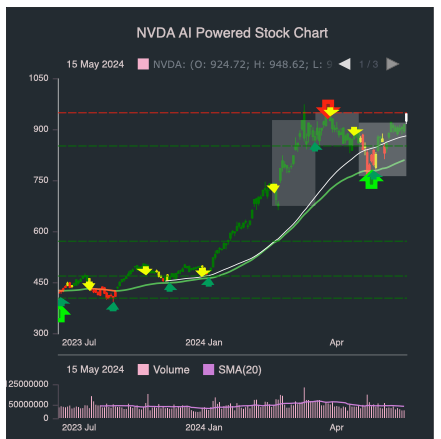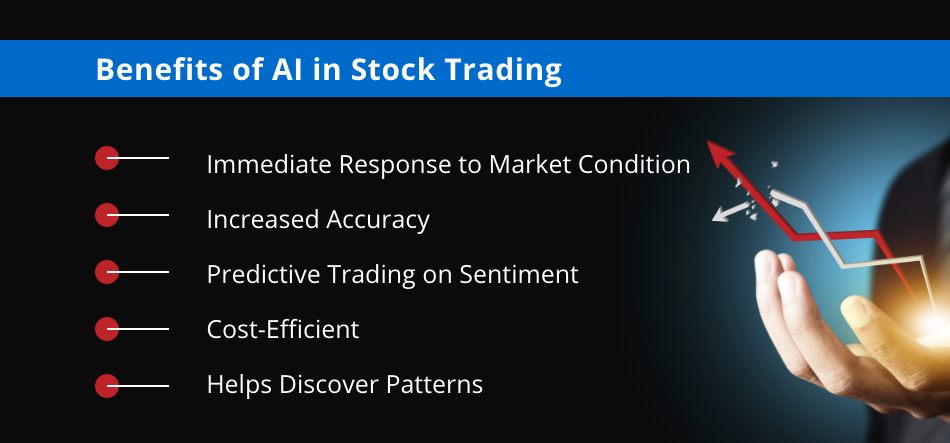20 Good Reasons For Choosing AI Stock Analysis Sites
20 Good Reasons For Choosing AI Stock Analysis Sites
Blog Article
Top 10 Suggestions For Evaluating The Price And Costs Of Ai Trading Platforms For Stock
Pricing and cost of AI-powered stock prediction and analysis platforms is crucial to avoid unexpected costs or hidden fees. Understanding the price structure is essential to make an educated decision. Below are the top 10 tips for assessing the price and costs of these platforms:
1. Find out more about the pricing model
Subscription: Be sure to verify if a platform has fees per year or month and what's included in each stage.
Pay-per - use: Verify the charges of the platform are based on the use, such as number of trades (or data requests), or prediction.
Freemium: Determine whether a platform offers an unrestricted free tier or costs extra for premium features.
2. Compare Pricing Tiers
Find out what features are included with each pricing stage.
Scalability: Be sure that the pricing tiers you choose are in line with your needs.
Upgrade flexibility - Examine for an easy way to change your plan or lower it if your requirements be changing.
3. Evaluate Hidden Costs
Data fees - Verify whether the platform charges an additional cost to access premium information (e.g. information in real time or advanced analytics).
Brokerage fees: Check if there are any extra charges associated with the platform to integrate with brokers or to execute trades.
API usage: Assess if there are extra costs for API access or high-frequency API usage.
4. Test out free demos and trial versions
Trial period: Select platforms that allow you to test the capabilities of their platform before making an agreement.
Trial limitations: Check if the free trial includes all features or is restricted in terms of functionality.
Alternatives with no commitments: You should be able to cancel your trial at no charges if you find that the platform doesn't satisfy your needs.
5. Check for Discounts and Promotions
Annual discounts: Determine whether your platform offers discounts on subscriptions paid annually, compared with plans billed monthly.
Referral programs: Check if the platform provides discounts or credits for referring other users.
Inquire about institutional or bulk pricing if your company is large.
6. Examine the Return on the investment
Cost vs. Value: Find out if the capabilities and forecasts of the platform justify its price. For instance, does it will help you make a better trading decision or save time.
Find out the platform's success rate, or testimonials from users to assess its potential return on investment.
Cost alternatives - Compare the platform's cost with the potential cost if you don't use it (e.g. missed opportunity, time spent on manual analysis).
Review Policies on Cancellation and Refunds
Cancellation policy: Make sure you are able to cancel your subscription without penalty, or with no hidden fees.
Refund Policy: Verify if your platform allows a refund if any of the subscriptions are not being used.
Auto-renewal. Find out if the platform automatically renews your subscription. If so you'll need to find out how to stop it.
8. Examine Transparency in Pricing
Clear pricing page: Make sure whether the website has a pricing page which is detailed, clear, and does not include any hidden fees.
Customer Support: To clarify unclear prices and charges, call customer support.
Contract Terms: Review the terms of service for any penalties or long-term agreements.
9. Compare with Competitors
Comparison of features Comparing the prices and features of the platform to the competition to ensure that you're getting the best price.
Feedback from users: Learn what other people think about the platform to determine if it is worth the cost.
Market positioning: Find out if it is priced as a premium, mid-tier, or a budget choice and if it is in line with your expectations.
10. Think about the long-term costs
Price increases Review the platform's history to see the frequency of raising prices.
Features Additions: Determine if there are new features available in your current package or whether you need to upgrade.
Scalability costs: Ensure the platform's price remains affordable as your trading activity or data requirements grow.
Bonus Tips
Trials for free on multiple platforms are available for you to try and compare the value and performance of various platforms.
Price negotiation: If your institution or you are a heavy user, it's worth to inquire about discounts or customized pricing.
There are numerous platforms offering educational resources and tools for no cost.
By following these tips to evaluate the price and cost of AI trading platforms that predict stocks or analyze them make sure you select one that's within your budget and provides the features and performance you need. A balanced platform can offer you the most efficient of both: affordability and functionality. See the most popular incite for blog tips including ai for stock predictions, ai investing, investment ai, ai investment platform, incite, trading with ai, investing ai, AI stock, trading with ai, best ai trading software and more.
Top 10 Tips To Assess The Risk Management Of Stock Trading Platforms That Use Ai
Risk management plays an essential part in any AI-based stock trading platform. It safeguards your investment by limiting losses that could occur and assists you in maximizing profits. A platform with strong risk management tools can aid you in managing volatile markets, and make better choices. Here are the 10 best strategies for evaluating these platforms' risk management capabilities:
1. Check out Stop-Loss and Take Profit Features
Customizable Levels: Ensure that the platform lets you define your own stop-loss levels as well as take-profit targets for strategies or trades.
Check whether the platform allows for trailing stops. They will automatically adjust themselves as the markets move in your favor.
You should check whether there are any stop-loss strategies that guarantee your position to be closed at the specified rate, even if the market is volatile.
2. Assess Position Sizing Tools
Fixed amount - Ensure that you know the amount of your positions in relation to a specific amount.
Percentage of portfolio: Check if you can set the size of your positions in percentages of your overall portfolio to manage risk proportionally.
Risk-reward-ratio: Verify whether the platform allows users to determine their own risk/reward ratios.
3. Make sure you are using Diversification Aid
Multi-asset trading. Make sure that your platform is compatible with multiple asset classes such as ETFs, Forex, Options, and Stocks.
Sector allocation: Check if your platform has tools to manage and monitor sector exposure.
Diversification of geographical areas - Make sure that the platform offers the ability to trade on markets across the world. This can help reduce geographical risks.
4. Review leverage control and margins.
Margin requirements: Ensure that the platform clearly outlines any margin requirements for trading leveraged.
Find out the limits on leverage. This option to manage your risk exposure.
Margin call notifications: Make sure that the platform is able to provide prompt notifications of margin calls to avoid account liquidation.
5. Assessment Risk Analytics and reporting
Risk metrics: Make sure the platform has key risk metrics (e.g. Value at Risk (VaR) Sharpe ratio, drawdown) for your portfolio.
Scenario Analysis: Determine if your platform allows you the capability to simulate different market scenarios to determine the potential risks.
Performance reports: See whether the platform has detailed performance reports that include risk-adjusted returns.
6. Check for Real-Time Risk Monitoring
Portfolio monitoring - Make sure that the platform you choose provides real-time monitoring so that your portfolio is secure.
Alerts and notifications. Ensure that the platform sends out real-time alerts when risk events happen (e.g. margin breaches or triggers for stop-loss order).
Risk dashboards - Examine to see if your platform has customized risk dashboards. This will give you more information about the risks you are facing.
7. Test Stress Testing and backtesting
Stress testing: Make sure the platform you use allows you to test your portfolio or strategies in extreme market conditions.
Backtesting: Make sure that the platform permits backtesting strategies using previous data to evaluate risk and performance.
Monte Carlo simulators: Verify that the platform is using Monte Carlo to simulate a variety of possible outcomes in order for you to evaluate risk.
8. Verify Compliance with Risk Management Regulations
Compliance with regulatory requirements: Ensure that the platform adheres to applicable risk-management regulations (e.g. MiFID II, Reg T, in the U.S.).
Best execution: Make sure that the platform follows the best execution methods. This will ensure that trades are executed according to the highest price possible to avoid loss.
Transparency. Verify that the platform is transparent and clear about the risks.
9. Verify for User Controlled Risk Parameters
Customized risk rules: Check whether your platform lets you create custom risk management guidelines (e.g. maximum daily loss or maximum size of the position).
Automated risk control: Check that the platform is able to automate the enforcement of risk management rules in accordance with your predefined criteria.
Manual overrides: Ensure that the platform supports manual overrides during emergency situations.
Review Case Studies, User Feedback Review Case Studies, User Feedback Case Studies
Review by users: Conduct research to determine the platform's efficiency in risk management.
Testimonials and case studies They will showcase the platform’s risk management capabilities.
Community forums: Find out if the platform has an active user community in which traders share risk management tips and strategies.
Bonus Tips
Trial period: Take advantage of a demo free or trial to test the risk management capabilities of the platform in real-world scenarios.
Support for customers: Ensure whether the platform provides the best support to questions or concerns relating to the management of risk.
Educational resources - Check to see whether the platform offers educational resources and tutorials on risk management best practices.
These tips will help you assess the risk management abilities of AI analysis and stock prediction platforms. This way you can pick a platform that safeguards your investment and reduces the risk of losses. To make trading successful and make sense of volatile markets, reliable risk management tools are essential. Take a look at the best continued on AI stock predictions for site tips including ai in stock market, ai share trading, best stock prediction website, ai tools for trading, AI stock trader, trading ai tool, best AI stock prediction, AI stock trader, invest ai, ai share trading and more.